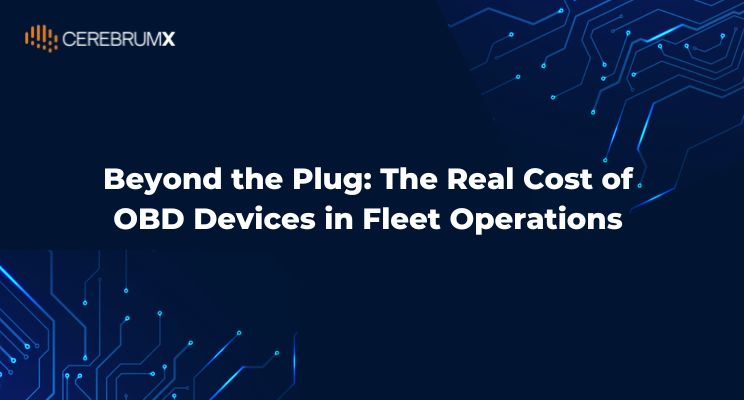In fleet management, the source of your telematics data can make or break operational efficiency. On the surface, OBD-II dongles offer a quick fix. A plug-and-play promise that seems to get you connected in minutes. But for fleets operating at scale, especially across geographies, these devices come with a cost that isn’t always visible on the invoice.
From regulatory challenges to patchy signal coverage and maintenance downtime, the hidden costs of dongle-based telematics add up fast. But more importantly, these systems often fall short on delivering the accurate, real-time insights fleets require to operate with confidence. It’s not just about data anymore; it’s about the precision, continuity, and compliance that your fleet strategy demands. And that’s where embedded vehicle data starts pulling ahead.
The Logistics of “Plug-and-Play” OBD Devices Are More Complex Than You Think
OBD-II dongles require physical installation. That means sourcing, shipping, and manually fitting hardware into every vehicle—an administrative load that only grows with fleet size. Add to that the complexity of cross-border operations and SIM compatibility issues, leading to connectivity gaps in certain regions. Moreover, not all data plans are region-agnostic, meaning your always-on promise may not hold up when your vehicle crosses into a different regulatory or telecom zone.
Then comes compliance. Dongles often collect and transmit data in ways that aren’t always aligned with data privacy laws across borders. With OEM-embedded data, however, vehicles are already designed to handle this complexity. The data flow is streamlined, accurate, and backed by automakers who ensure the solution meets evolving global data norms like CCPA and GDPR.
Every Minute of Downtime Is Money Lost
For high-utilization fleets, uptime is everything. And OBD-based telematics introduces too many variables.
- Devices can fall off during transit
- Bluetooth or cellular pairing can fail anytime
- When vehicles are swapped or reassigned, tracking continuity breaks
- Hardware damage or firmware issues can require service downtime
These aren’t isolated cases instead they’re recurring pain points for fleets using dongles. And each one costs time, money, and operational peace of mind. Embedded telematics removes these points of failure entirely. The vehicle is the device. Data is transmitted natively through factory-installed systems with no risk of, no accuracy drop, and no hardware dependency—even when the vehicle changes hands.
Visibility Without Vulnerability
Managing a large or growing fleet means constantly asking: Can I see what’s happening? Can I trust what I see? With dongle setups, the answer is often “it depends.” If the device is unplugged, misplaced, or malfunctioning, the data stream stops. You lose visibility, often without warning. For compliance-driven industries like logistics, mining, or public transport, that’s a risk you can’t afford. Embedded telematics brings both transparency and accountability. Maintained by the OEM and integrated into the vehicle’s core systems, the data is continuous, consistent, and accurate—eliminating blind spots and second-guessing.
The Total Cost of Ownership (TCO) Equation Has Changed
Fleets need to think beyond acquisition cost when evaluating telematics strategies. Dongles may seem inexpensive upfront, but factor in:
- Hardware provisioning and shipping
- Installation and driver training
- Ongoing device monitoring and maintenance
- Cross-border data interruptions
- Risk of data loss and compliance violations
- Operational downtime from device issues
These costs aren’t reflected in the invoice, but they affect your bottom line daily. In contrast, embedded telematics offers a frictionless, hardware-free experience. With zero manual intervention, no SIM provisioning, and seamless scalability, embedded solutions deliver more than connectivity—they deliver accuracy at scale.
Embedded Isn’t Just a Tech Upgrade—It’s a Strategic Advantage
As fleet operations become more digital and decentralized, the underlying data infrastructure must be both stable and scalable. Dongles simply weren’t built for today’s real-time, high-frequency, cross-border demands. Embedded telematics eliminates uncertainty, be it signal strength, device integrity, or compliance worries. It reduces friction, improves uptime, and delivers OEM-grade precision that fleets can trust.
For fleet operators focused on growth, efficiency, and long-term ROI, embedded is no longer a luxury. It’s the smarter baseline. Ready to move beyond the plug? Connect with us at connect@cerebrumx.ai to explore how embedded data can streamline your fleet operations with fewer costs and far greater accuracy.

